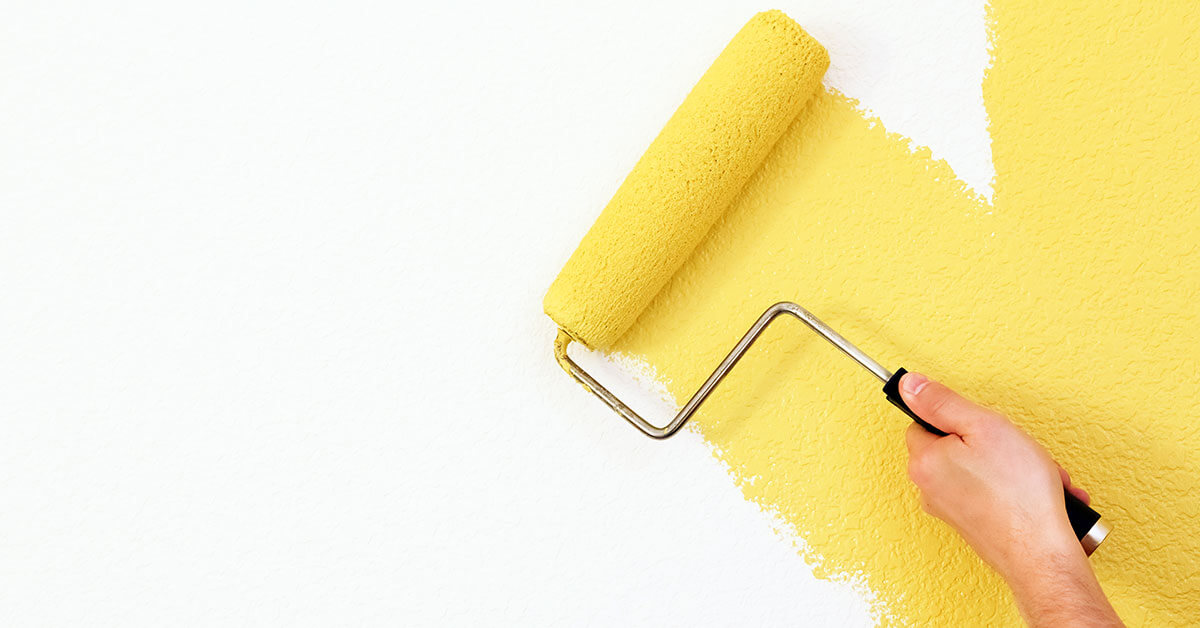Home Decorating Tips
What’s the Best Heat-Resistant Paint to Use?


Some homes or places can benefit from using products that offer heat resistance. One of the most accessible products that may help with this goal would undeniably be heat-resistant paints, which have been widely used in many buildings across different industries.
This begs the question though: Is it possible to use heat-resistant paints for your home? Luckily, it’s a yes! Take some time to find out more about heat-resistant or heat protection paints and how you can use them for your home.
What Are Heat-Resistant Paints?
Heat-resistant paints are specially formulated to withstand high temperatures of up to 750 degrees Celsius. What makes these different from other types of paint ultimately lies in their composition. Heat-resistant paints are made up of inorganic pigment powder that’s combined with a binder solution made of polysilicon alkoxide.
As the name implies, heat-resistant paints are used on surfaces to reduce the risk of overheating. The paints also provide a layer of protection for the metal underneath the insulation, helping prevent corrosion. These paints offer a beautiful finish, are aesthetically pleasing, and can be purchased in many colors.
Heat-resistant paints are most often used in refineries, paper mills, and chemical plants, on the surfaces of boilers, pipes, furnaces, incinerators, and chimneys. At home, these paints may be used on boilers, fireplaces, grills, kilns, ovens, stoves, steam pipes, chimneys, and fans.
What Are the Types of Heat-Resistant Paint?
You can encounter various types of heat-resistant paint. Some known types of heat-resistant paint include:
- Epoxy coatings: They’re a top choice for industrial applications as they can resist abrasions and tremendous impact, especially those involving heavy machinery and foot traffic.
- Epoxy phenolics: These are often cured via heating at 177 to 204 degrees Celsius (350 to 400 degrees Fahrenheit). Epoxy phenolics offer strong adhesion capabilities and resistance toward high temperatures and chemicals.
- Epoxy novolac: A unique feature of epoxy novolac would be its high resistance to oxidizing and non-oxidizing acids. As such, these heat-resistant paints are often used in the crude oil and tanker industries.
- Silicone: Examples include Island Paints’ Industrial Silicone HR 650 Aluminum and Industrial Silicone HR 400U Undercoat. Silicone-based paints are used on furnaces, boilers, engine blocks, hot pipes, and radiators.
- Modified silicone: These refer to silicone paints that can’t be exposed to extremely high temperatures. However, you can still use them provided the surface you’re painting these on has a temperature of 107 degrees Celsius (255 degrees Fahrenheit).
- Multi-polymeric: Available either water- or solvent-based, multi-polymeric paints offer medium to high-temperature resistance. These are used at construction sites and can act as a maintenance coating.
- Powder coating: These are made of silicone and epoxy and work just like typical paints, although these are in powder form. You may want to consider silicone-based powder products as they’re known to fare better at higher temperatures.
- Sprayed metal, metal additive, or thermal sprays: These do well in preventing corrosion, particularly for pipes or tanks that are hidden beneath insulation and aren’t examined frequently.
- Ceramic paints: These are often used on machine parts that encounter high temperatures.
- Enamel paints: Heat-resistant enamel paints are often used on car parts, especially those exposed to engines.
Safety Tips for Heat-Resistant Paints
If you’re going to apply any type of heat-resistant paint to your surfaces, take note of these application tips:
- Avoid painting when the surface temperature is above 50 degrees Celsius or 125 degrees Fahrenheit. Ensure that the surfaces have been cooled down too before painting.
- If possible, turn off the source of heat or ignition that affects the surface.
- Wear gloves, goggles, masks, and other personal protective gear when working with any form of heat-resistant paint.
- Use newspapers or drop cloth to protect your workspace from paint splatters and dirt.
- Ensure that your workspace is well-ventilated, with room temperatures between 15 to 426 degrees Celsius (60 to 80 degrees Fahrenheit).
- Thoroughly clean and remove rust, dust, grease, oil, and loose paint from the surface you’ll work on. If needed, you can use sandpaper on glossy areas for painting.
- Follow manufacturer’s instructions or datasheets. These come with products like paint primers, paint thinners, paint sealers, and paint themselves, and should inform you how to use these items safely and properly.
- Wait for products to thoroughly dry before applying another layer. Follow drying times stated on the product’s instructions or datasheets.
- When you’re done using any heat-resistant products, refer to the manufacturer’s instructions or data sheets again for guidance on how to store or dispose of them. This way, you can prevent accidents caused by any of the chemical substances in these items.
- If you’re using heat-resistant spray paint, shake the can for a minute so the mixing ball rattles well.
Undeniably, a lot of consideration, planning, and preparation needs to be done if you’re keen on using heat-resistant paint for your home. Should you need more information about the best heat-resistant paint for your house or other projects, feel free to consult a professional who can walk you through the process and provide you with more insights.
If you’re looking for high-quality heat-resistant paints, look no further. With Island Premium Paints, you can. These products have a Product Satisfaction Guarantee that’ll help you achieve your desired finish. To know more about their details and see other home improvement tips, head to the Island Premium Paints website today!
Sources:
https://www.ippmagazine.com/fireproof-paint/heat-resistant-paint-silicone-epoxy/
https://islandpaints.wpengine.com/product/industrial-hi-heat-990-aluminum/
https://islandpaints.wpengine.com/product/industrial-silicone-hr-650-aluminum/
https://islandpaints.wpengine.com/wp-content/uploads/2019/07/Indl-Hi-Heat-990-Aluminum-TDS.pdf
https://islandpaints.wpengine.com/wp-content/uploads/2019/07/Indl-Silicone-HR-650-Aluminum-TDS.pdf
https://islandpaints.wpengine.com/home-decorating-tips/what-surfaces-to-use-quick-dry-enamel-on/
https://www.doityourself.com/stry/10-best-applications-for-heat-resistant-paint
http://chemicintegratedservices.com/factors-to-consider-when-selecting-a-heat-resistant-paint/
https://schausvorhies.com/how-is-high-temperature-paint-used/
https://gopaintsprayer.com/high-temp-paint/
Our Products
Our line of high quality paints and products will give your home or project the vibrancy it needs.
Explore Colors
Ready to explore colorful possibiliies today? View our popular paint colo combination palettes for great color schemes and room design ideas for interior and exteriors.





